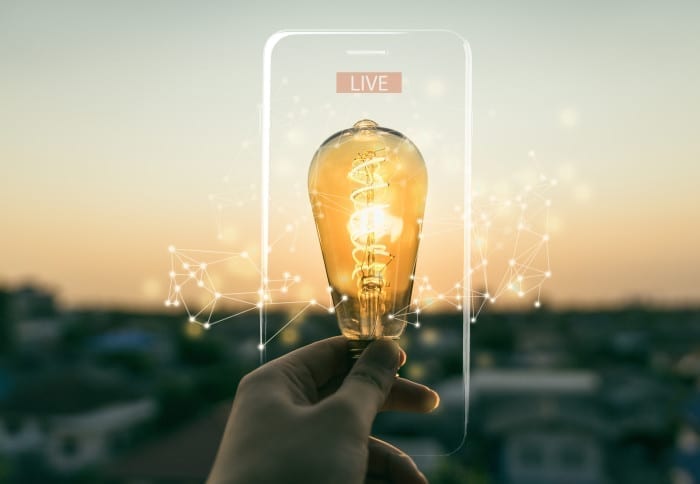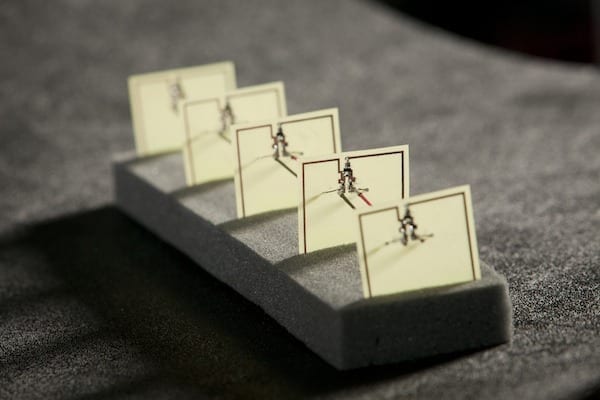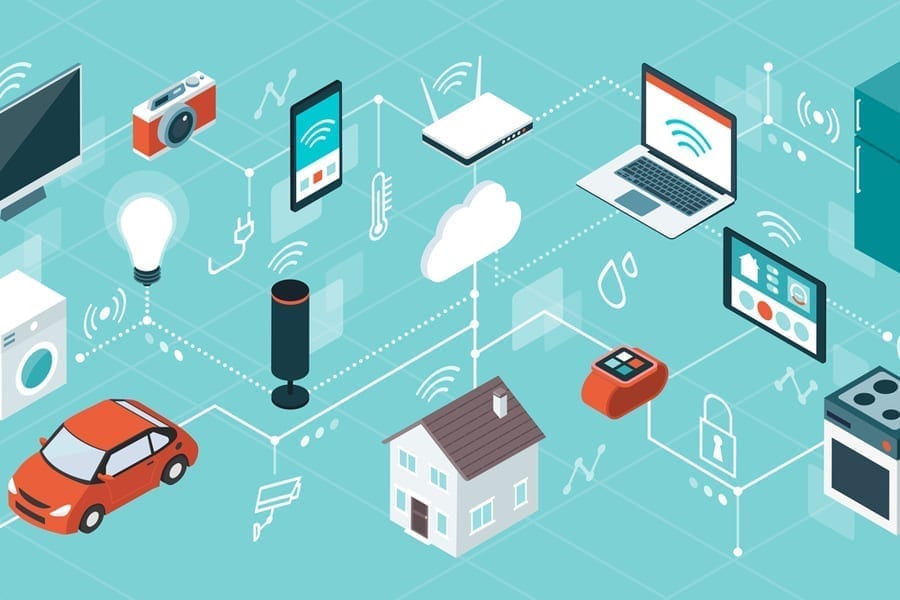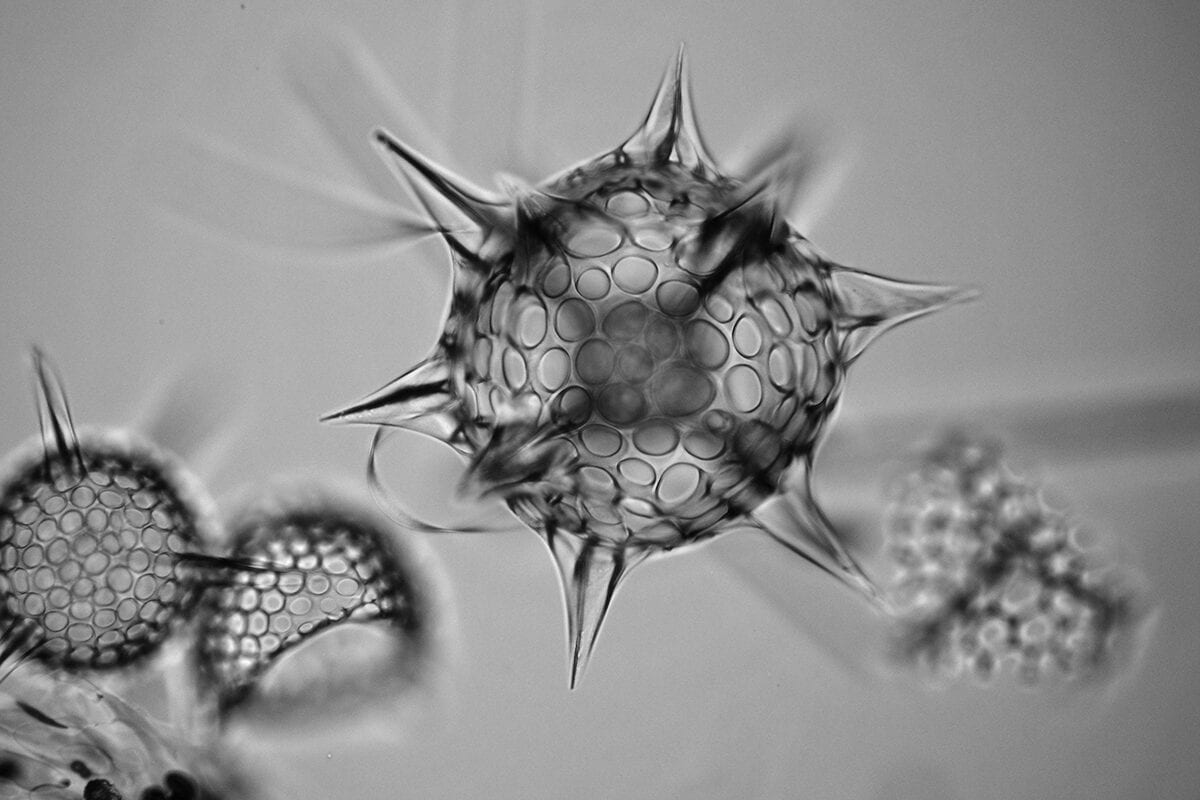
via Imperial College London
Researchers have developed environmentally friendly materials that could harvest enough energy from indoor light to power wireless smart devices.
We are increasingly using more smart devices like smartphones, smart speakers, and wearable health and wellness sensors in our homes, offices, and public buildings. However, the batteries they use can deplete quickly and contain toxic and rare environmentally damaging chemicals, so researchers are looking for better ways to power the devices.
The materials can turn light into electricity with an efficiency already in the range of commercial technologies. Dr Robert Hoye, Department of Materials
One way to power them is by converting indoor light from ordinary bulbs into energy, in a similar way to how solar panels harvest energy from sunlight, known as solar photovoltaics. However, due to the different properties of the light sources, the materials used for solar panels are not suitable for harvesting indoor light.
Now, researchers from Imperial College London, Soochow University in China, and the University of Cambridge have discovered that new green materials currently being developed for next-generation solar panels could be useful for indoor light harvesting. They report their findings in Advanced Energy Materials.
Co-author Dr Robert Hoye, from the Department of Materials at Imperial, said: “By efficiently absorbing the light coming from lamps commonly found in homes and buildings, the materials can turn light into electricity with an efficiency already in the range of commercial technologies. We have also already identified several possible improvements, which would allow these materials to surpass the performance of current indoor photovoltaic technologies in the near future.”
Our discovery opens up a whole new direction in the search for green, easy-to-make materials to sustainably power our smart devices. Professor Vincenzo Pecunia – Soochow University, China
The team investigated ‘perovskite-inspired materials’, which were created to circumvent problems with materials called perovskites, which were developed for next-generation solar cells. Although perovskites are cheaper to make than traditional silicon-based solar panels and deliver similar efficiency, perovskites contain toxic lead substances. This drove the development of perovskite-inspired materials, which are instead based on safer elements like bismuth and antimony.
Despite being more environmentally friendly, these perovskite-inspired materials are not as efficient at absorbing sunlight. However, the team found that the materials are much more effective at absorbing indoor light, with efficiencies that are promising for commercial applications. Crucially, the researchers demonstrated that the power provided by these materials under indoor illumination is already sufficient to operate electronic circuits.
Co-author Professor Vincenzo Pecunia from Soochow University said: “Our discovery opens up a whole new direction in the search for green, easy-to-make materials to sustainably power our smart devices.
“In addition to their eco-friendly nature, these materials could potentially be processed onto unconventional substrates such as plastics and fabric, which are incompatible with conventional technologies. Therefore, lead-free perovskite-inspired materials could soon enable battery-free devices for wearables, healthcare monitoring, smart homes, and smart cities.”
The Latest Updates from Bing News & Google News
Go deeper with Bing News on:
Wireless Smart devices
- Wired vs. Wireless Video Doorbell: Which Option Rings Better for Your Smart Home?
Wired video doorbells offer always-on power for constant monitoring. Wireless video doorbells provide flexibility in placement but require battery recharging.
- ON Semiconductor: A Smart Way To Capitalize On The Semiconductor Industry
OnSemi supplies chips to end markets currently in a cyclical downturn, causing revenue to decline. Click here to read an analysis of ON stock now.
- Hackaday Podcast Episode 268: RF Burns, Wireless Charging Sucks, And Barnacles Grow On Flaperons
Elliot and Dan got together to enshrine the week’s hacks in podcast form, and to commiserate about their respective moms, each of whom recently fell victim to phishing attacks. It’s ...
- Global Wireless Connectivity Market Surges Towards $345 Billion by 2032, Driven by Smart City Investments & Industrial Adoption
The wireless connectivity market is forecasted to register a 14.1% CAGR during the forecast period (2022-2032) & is projected to reach US$ 345 Bn by 2032.
- Forget Sonos, this device can stream your vinyl records to any smart speaker
The A2D2 Stream is a relatively small box that you connect to your deck (or another analogue audio source) via its stereo phono inputs. It comes with Wi-Fi and Ethernet connectivity to hook it up to ...
Go deeper with Google Headlines on:
Wireless Smart devices
[google_news title=”” keyword=”wireless smart devices” num_posts=”5″ blurb_length=”0″ show_thumb=”left”]
Go deeper with Bing News on:
Indoor light harvesting
- Ornamental trees are growing in popularity. Here’s how to plant one: This Week in the Garden
Today’s Arbor Day – marked the last Friday of each April – is good timing to plant since the soil has warmed but temperatures usually stay in a comfortable range for at least those first several ...
- My tips will get you a blooming indoor garden including your own potato tower – follow my method to save money on seeds
A BLOOMING lovely indoor garden could be within your grasp this summer with tips from a garden pro. He said his easy-to-follow plant method will save you money on seeds. But that’s not all ...
- These Are the Best Hanging Houseplants for an Indoor Oasis
If your home could use some life, these indoor hanging plants are perfect for adding greenery. Full of cascading foliage and flowers, they're ideal for small spaces.
- Vertical Harvest Farms Secures USDA Loan Guarantee & Maine’s First C-PACE Funding for Industry-Leading Project Financing
Deal Recognizes Power of Public-Private Partnerships to Bolster State's Food System PORTLAND, ME / ACCESSWIRE / April 24, 2024 / Vertical Harvest Farms, an indoor farming company ... such as upgrading ...
- Researchers Look At Challenges to and Solutions for Indoor Farming
Newly published paper examines sustainability challenges faced by those growing crops through controlled environment agriculture.
Go deeper with Google Headlines on:
Indoor light harvesting
[google_news title=”” keyword=”indoor light harvesting” num_posts=”5″ blurb_length=”0″ show_thumb=”left”]










